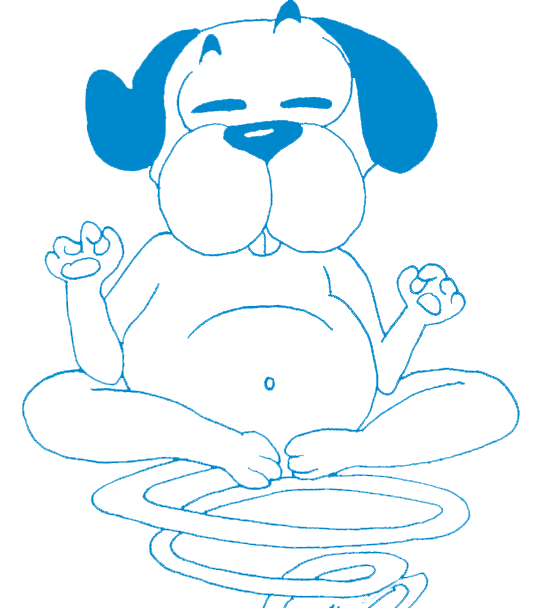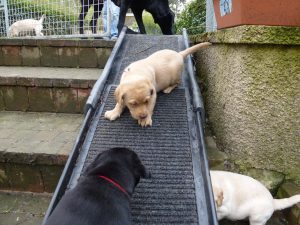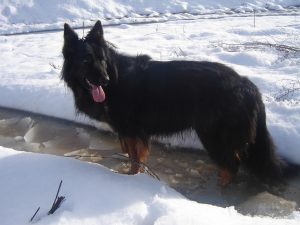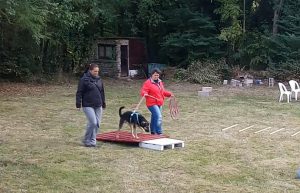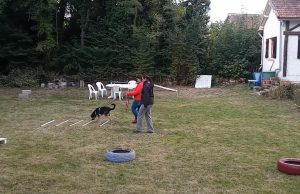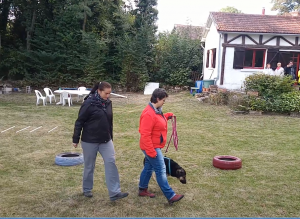To sum up very briefly, the musculature (ours as well as that of our dogs) is made up of two categories: deep muscles and superficial muscles.
Deep muscles (or short muscles)
Not very bulky and close to the joints, they have a role in maintaining the anatomy in position and a role in balancing the anatomy in movement. They build and strengthen themselves when we make slow and controlled movements. In human gymnastics, yoga and the Pilates method are perfect examples of exercises adapted to the development of deep muscles, just like walking at a moderate pace.
Superficial muscles (or long muscles)
They mainly have a mobility role (dynamic and amplitude). They are more voluminous and are visible under the skin (therefore further away from the joints).
The building of the muscles, for an optimal result, must be done from the inside (deep muscles close to the joints) to the outside (superficial muscles visible under the skin). Until our dog has reached physical maturity (12 to 24 months depending on the breed), it is important to favour calm, slow activities with controlled movements. Activities involving fast movements, running or jumping should not be considered before adulthood.
Object throwing games (throwing a toy over and over again to get our dog to bring it back to us) are extremely physically (and emotionally) demanding, and are therefore to be avoided throughout our dog’s life. Our role is to provide our dog with games that protect him from injury or wear and tear and that build him up safely for a healthy and peaceful life.
|
|
|
Remember that our dog’s skeleton is not equipped with a collarbone. Its spinal column is therefore connected to the scapula (upper bone of the front legs) by muscles and tendons only. It is therefore essential, before any physical activity, to allow our dog to warm up his muscles. There are two options: a ten-minute massage or a calm, slow walk on a short leash.
Warm-up by massage
A warm-up massage is given a maximum of 20 minutes before the physical activity. A second massage can also be performed after the physical activity, in order to eliminate the various toxins from the muscle mass and to avoid aches and pains after physical exercise (within 2 hours after the end of the physical activity).
Warm-up by slow walk
We are obviously not talking about agility which is an activity of jumps, propulsions and landings, at high speed. Rather, we are talking about a slow moving course, climbing a very gentle inclined plane, crossing bars on the ground or going around tyres that are 4 to 5 metres away from each other.
We will choose the obstacles carefully, depending on the physical condition of our dog. Are we talking about a young or old dog, a sick or injured dog, a healthy dog in the prime of his life?
Let’s keep an eye on the development of our dogs’ physical condition. A dog does not become “old dog” overnight. Like the body of an aging human, a dog’s body will feel its muscles become less powerful and its joints become less flexible. Certain pathologies set in in the same way, as they develop. Let’s keep this in mind.
We can offer our dog guidance on how to find his way around: take a walk by passing between the objects on the course. He will be able to analyse them with all his senses and get used to them. If our dog walks calmly, the leash may be long. If our dog walks fast or is excited, a short leash is required. If our dog has not learned to walk on a leash without pulling, we will teach him outside of the course. We cannot simultaneously learn to walk over a course and learn to walk without pulling on the leash. Each type of learning requires a specific session.
For a healthy dog, the course can be completed twice in its entirety. For any other dog, one time is sufficient.
![]() Video: course for a healthy dog
Video: course for a healthy dog
|
|
|
|

